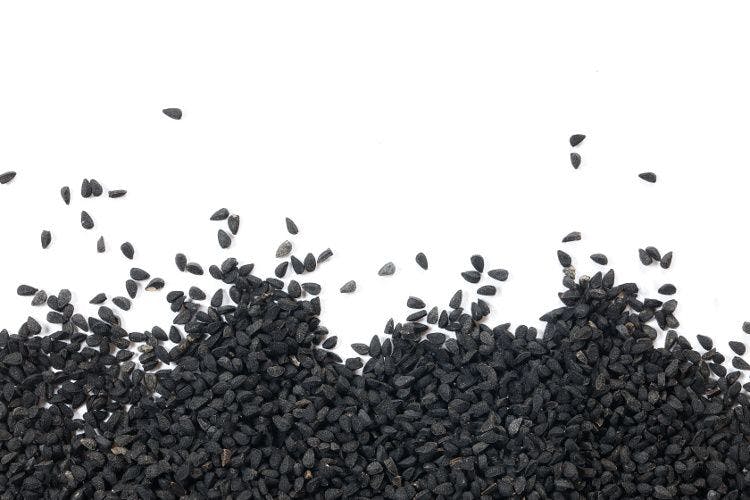Around the bend: What’s next for joint health supplements?
Demand for joint-support supplements is perennially solid, but the changing face of the consumer is injecting new life into the category.
Photo © AdobeStock.com/Sebastian Kaulitzki

You needn’t be an aging boomer to understand the value of maintaining healthy, functioning joints. In fact, if you’re hunting for nutritional joint support these days, you’re as likely to be an occasional triathlete or wellness-minded grad student as you are a recipient of Social Security.
That’s because, as Juliana Erickson, senior marketing manager, Lonza Consumer Health & Nutrition (Morristown, NJ), notes, “While joint health has long been a key consideration for seniors, other demographics, such as Millennials and ‘weekend warriors,’ are now taking steps to support their joints as part of their overall approach to health and wellbeing.”
Their participation in the market is changing how brands approach everything from joint-health formulation and product format to future research and development.
As well it should. As Erickson says, “Consumer needs are increasingly complex, involving convenience, evidence-based efficacy-even plant-based, sustainable solutions. As such, manufacturers are looking to formulate joint-health products using science-backed ingredients and advanced delivery technologies to differentiate in this marketplace.”
Changing Face of Joint Health
Demand for joint-support supplements is perennially solid, but the changing face of the consumer is injecting new life into the category.
According to recent unpublished proprietary research that Lonza conducted with the Natural Marketing Institute, joint health placed within the top-five health concerns among the general U.S. population, with 36% of respondents expressing concern about maintaining joint health and 44% willing to purchase a joint-health supplement in response-up 32% since 2009.1
The reasons why are apparent.
For one, we’re getting older as a population, and when that happens, joint complaints follow. Notes Shaheen Majeed, president worldwide, Sabinsa (East Windsor, NJ), most people over age 45 suffer from osteoarthritis of the knee, hand, and hip, making arthritis “a significant health concern in developing and developed countries, and a primary cause of joint-related health problems in the aging population.”
But today’s interest in joint support is hardly all about growing old. Witness those aforementioned Millennials.
As Erickson says, “Millennials in particular have become the driving force for shaping innovative joint-health products aimed at supporting their fast-paced lifestyles and helping with issues such as cartilage degradation, while also meeting their dietary preferences.”
Indeed, having grown up in a post-DSHEA world-the Dietary Supplement Health and Education Act of 1994 that launched the official dietary supplement industry in the U.S.-Millennials are native to a supplement shelf with more options than their parents enjoyed at the same age, Majeed adds. That being the case, he believes that Millennials view joint-health supplementation as just another aspect of taking care of their overall health.
Moved to Act
Regular exercise plays a similar role. Yet as more Millennials-and the rest of us-move our bodies, “we’ve seen an increasing number of joint issues in younger and middle-aged subjects either playing competitive sports or hitting the gym a little more than they should,” says Paul Clayton, PhD, chief scientific advisor to Gencor (Irvine, CA).
True, working out is largely to the good, but high-impact and repetitive activities place undue stress on joints, Erickson says, “leading to degradation of joint cartilage and increasing the incidence of joint discomfort among all active age groups. This motivates more consumers to seek joint-health support solutions.”
But despite the fitness boom, we’re still a population beset by overweight and obesity. More young people now qualify as obese, Clayton notes, predisposing them to joint issues before their time. “The number of hip and knee replacements is increasing steadily,” he says, “and has been for several years. This is directly related to a general increase in body weight and, most likely, deterioration of cartilage chemistry.”
The upshot: Consumers need joint support, he concludes, and they’re “beginning to understand that NSAIDs and a glass of milk aren’t going to take care of it alone.”
Out with the Old
But neither-at least not exclusively-will the flagship ingredient combination of glucosamine and chondroitin, which helped make Joint Juice a household name and has been a standard pairing in the joint-health category for years.
Why? Clayton points to “paucity of evidence” for its effectiveness.
Majeed mainly agrees. He says: “As the industry’s evolved from the basic glucosamine-plus-chondroitin combo formula of the early days-which didn’t work for everyone-to formulations with ingredients that address a broader range of issues, more consumers have found options that help.”
Those options work via a number of mechanisms. Some actually improve joint tissue architecture. Others inhibit the enzymes cyclooxygenase (COX) and lysyl oxidase (LOX) to reduce severe pain. “Certain counterirritants, such as capsaicin or menthol, can interfere with pain’s signal to the brain,” Majeed says. “And specific biological response modifiers, such as anti-inflammatory cytokines and antibodies against important pro-inflammatory cytokines like TNF-alpha, are also used as target-specific therapies for reducing inflammation.”
Herbal Help
Majeed emphasizes that the joint-health literature includes a number of human studies demonstrating the pain-relieving and joint-supporting capacity of botanical extracts and isolates, among them Arnica montana, Boswellia serrata, Curcuma longa, Equisetum arvense, Harpagophytum procumbens, Salix alba, Sesamum indicum, Symphytum officinale, Zingiber officinale, Panax notoginseng, and Withania somnifera. With more consumers equating “natural” with “better,” he says, this bodes well for the herbal sector.
“In most healing modalities,” Majeed continues, “herbs are traditionally used in combination rather than singly, as any herbalist can tell you, because they approach a condition from several directions, supporting each other synergistically.”
For example, he’s bullish on the combination of curcumin and boswellia. The former inhibits COX-2, whereas the boswellic acids in the latter are 5-LOX inhibitors of the arachidonic acid pathway. “So the combination of COX-2 and 5-LOX inhibition is ideal for inflammation management,” Majeed says.
An investigation into whether three months of supplementation with curcumin and boswellia extracts could affect plasma levels of oxidative stress markers, inflammation, and glycation in 47 healthy male master cyclists found positive effects in glycoxidation and lipid peroxidation, Majeed says, “indicating the potential for combining curcumin with boswellia to achieve joint-health benefits.”2
His company combined both its branded Curcumin C3 Complex and Boswellin, a standardized extract of Boswellia serrata, with ginger to create NiLitis SR, a sustained-release bilayer tablet designed for joint health. A published study involving adult subjects with knee pain found that the combination produced “a very positive effect on knee discomfort,” Majeed says.3
Boosting Anandamide
Beyond herbals, Clayton is excited about palmitoylethanolamide (PEA), an endogenous fatty acid amide produced as a repair response to damage, stressors, discomfort, and inflammation.
He describes it as “an autocoidal substance directly involved in exercise-induced hypoalgesia” and calls it “very promising, indeed.” Structurally related to anandamide, the body’s inherent pain regulator, PEA may potentiate anandamide’s effects and inhibit fatty-acid amide hydrolase, which breaks down anandamide.
“PEA also helps stimulate production of the body’s endocannabinoids, which help regulate sleep, immune-system response, relaxation, pain, and more,” Clayton continues. “PEA is not only revolutionizing joint health but is proving beneficial within the recovery, relaxation, and sleep categories and exhibits a remarkable series of pharmacological similarities to CBD.” (CBD is the cannabidiol cannabinoid in hemp.)
Like curcumin, PEA is minimally dispersible in aqueous environments, including the stomach. Gencor and its sister company Pharmako Biotechnologies (New South Wales, Australia) developed a dispersion technology called LipiSperse that helps fat-soluble ingredients like PEA disperse more freely for better functionality and bioavailability.
The company’s dispersion-enhanced PEA ingredient Levagen+ displays improved pharmacokinetics, Clayton notes, and a recent arthritis study demonstrated its abilities further. His advice: “Keep an eye on this one.”
Collagen Still Strong
Collagen may not be a new entrant to the joint-health field like PEA, but it has history, familiarity, and continued innovation on its side.
Erickson points to clinical evidence showing that her company’s undenatured type II collagen product UC-II supports joint comfort, flexibility, and mobility by activating the body’s natural repair mechanisms.
When taken orally, she explains, it travels to Peyer’s patches, specialized lymphoid follicles in the small intestine, where it interacts with the immune system, triggering regulatory T-cell stimulation and further production of cytokines that circulate to affected joints. “Upon arrival,” she continues, “these cytokines induce knee joint resident chondrocytes to begin producing more type II collagen and other constituents that compose the structural matrix of the knee joint.”
Erickson suggests brands combine the ingredient with curcumin in her company’s DUOCAP capsule-in-capsule technology. The format can deliver a small collagen dose in the inner capsule and curcumin in the outer. “This enables consumers to benefit from the two ingredients’ synergies in a single supplement, while helping brands differentiate their products in a crowded and competitive market,” she says. “Synergistic ingredient combinations and advances in delivery technologies are really pushing joint health to new horizons.”
Future Forward
She can say that again.
“Methods and technologies keep evolving to improve the duration of discomfort-reducing supplements, site-specific actions targeting particular joints, and delayed and continued delivery systems to improve efficiency and reduce the number of doses,” Majeed says. Gels, liquids, oral formulations, and systems like his company’s bilayer tablets “have been developed to address the above issues.”
On a more forward-looking path is research into stem-cell approaches, Clayton adds, as well as work at the St. Petersburg Institute of Gerontology that he claims “provides a fascinating and much more user-friendly alternative” to stem cells. Scientists there are working with organ-specific growth peptides that “could provide the ideal and ultimate joint-health approach: the regeneration and replacement of damaged cartilage and related tissues,” he says.
It’s exciting work, but it remains in the distance. So for the time being, Clayton says, “We’ll still need the more acute types of supplement products that provide almost instant relief.”
References:
- Natural Marketing Institute. 2018 Lonza SORD report. 2019. (Unpublished)
- Chilelli NC et al. “Curcumin and Boswellia serrata modulate the glyco-oxidative status and lipo-oxidation in master athletes.” Nutrients, vol. 8, no. 11 (November 21, 2016): 745
- Majeed M et al. “Effect of Nilitis® SR on knee pain in Japanese adults: a double-blind, randomized, placebo-controlled study.” International Journal of Innovative Research in Medical Science, vol. 1, no. 6 (August 2016): 285–293

Prinova acquires Aplinova to further increase its footprint in Latin America
April 7th 2025Prinova has recently announced the acquisition of Brazilian ingredients distributor Aplinova, which is a provider of specialty ingredients for a range of market segments that include food, beverage, supplements, and personal care.























